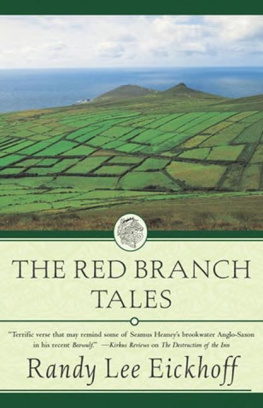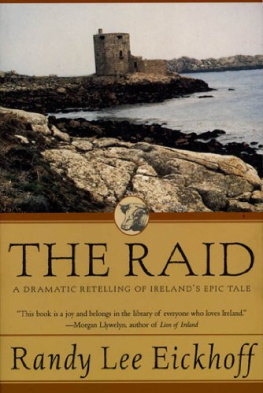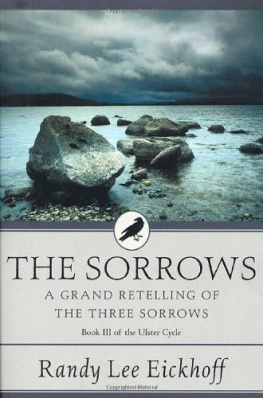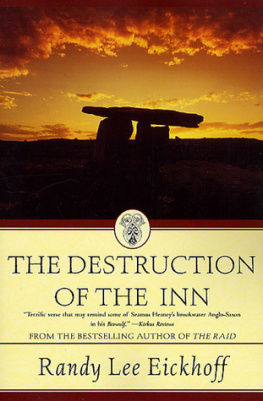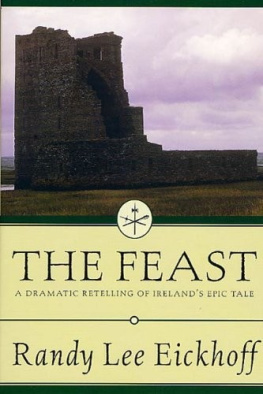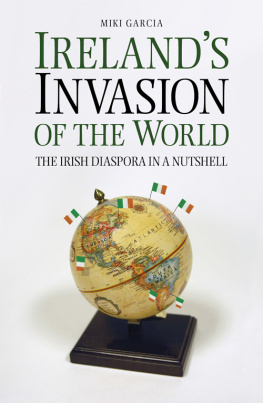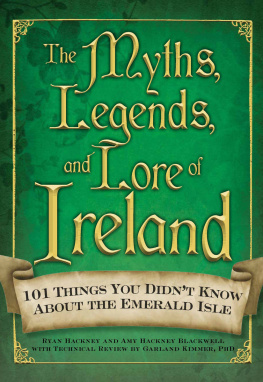The author and publisher have provided this e-book to you without Digital Rights Management software (DRM) applied so that you can enjoy reading it on your personal devices. This e-book is for your personal use only. You may not print or post this e-book, or make this e-book publicly available in any way. You may not copy, reproduce or upload this e-book, other than to read it on one of your personal devices.
Copyright infringement is against the law. If you believe the copy of this e-book you are reading infringes on the authors copyright, please notify the publisher at: us.macmillanusa.com/piracy .
Four books The Book of Leinster, The Yellow Book of Lecan, The Book of the Dun Cow, and The Book of Invasions remain that provide an account of Ancient Irish literature, although a broad explication certainly exists with Seamus Deanes Field Day Anthology , which consists of samples from various Irish periods. Very little, however, explores the large corpus of the Ulster Cycle, sometimes called the Red Branch Cycle, which was primarily responsible for establishing the cultural identity of todays Ireland.
The last attempt at analyzing the Ulster Cycle was by Rudolf Thurneysen in his Die irische Helden- und Knigsage (Halle, 1921). This work established certain critical parameters, but in it the stories themselves were sketchy and, in some cases, incomplete. T. F. ORahilly examined critically many of the sagas in his Early Irish History and Mythology (Dublin, 1946), and his scholarship helped to bring a sense of order to the sprawling mythology. Yet he still did little to examine and explain the Ulster Cycle.
Part of the problem with the Ulster Cycle is in the linguisticsand language. Ancient Irish is far more complicated than Middle Irish, which, in turn, is far more complicated than Modern Irish. A rough comparison for the English-speaking reader would be the evolution from Anglo-Saxon to Modern English. Yet even with that comparison the knotty problems faced by translators of Ancient Irish are scarcely revealed. Language is not a pure or static entity, since it reflects and is shaped by the ever-changing customs and religious beliefs of a society. Much of what is commonplace disappears as a society evolves, and what is taken for general knowledge at the time becomes an obscurity three or four hundred years later.
Problems exist as well with double entendres, regional humor, superstitions, and the complexities of myth and religion. Spelling can be irritating because what has become static in modern language was a hodgepodge affair centuries before. Indeed, some words even alter definitions through time. This alteration is very apparent in the Irish language.
Perhaps the hardest task in trying to preserve a culture is piecing together what has been lost. The Ulster Cycle is a prime example of this difficulty, since many of the stories that once existed in an oral tradition were lost or fragmented in transcription. Unfortunately, we cannot even be certain if any single story is the correct version, because a scribe may have corrupted a text either accidentally or deliberately. The ancient bards also created a problem when they transmitted many of the stories orally to students in a type of shorthand that provided an outline of the story with instruction on how the tale-teller might embellish to accommodate the necessity of the moment.
Three manuscripts are of special interest to todays scholar, although they are by no means the sole sources of the stories that constitute the Ulster Cycle. The Book of the Dun Cow (Lebor Na hUidre), written before 1106 and now in the Royal Irish Academy in Dublin, contains many of the heroic sagas. The Book of Leinster (Lebor Laigan) , written before 1160, contains history, genealogy,saga, and poetry; it is now in Trinity College Library, Dublin. Rawlinson B 502 contains twelve leaves, written in the eleventh century, in which the Annals of Tigernach are recorded and seventy leaves written in the twelfth century that are concerned with historical matter, law tracts, the Dinnshenchas , and Saltair na Rann . Rawlinson B is in the Bodleian Library at Oxford, England.
These are not the only materials, however. Four vellums written in the late fourteenth or early fifteenth century in the west of Ireland are The Yellow Book of Lecan, The Great Book of Lecan, The Book of Hy Many, and The Book of Ballynote. The Yellow Book of Lecan is especially important because it contains the earliest extant copy of Tin B CuailngThe Cattle-Raid of Cooley which is not only the central saga of the Ulster Cycle but the story that defines the cultural identity of todays Ireland. The Yellow Book of Lecan may be found in Trinity Library, while the other three are in the Royal Irish Academy.
It is surprising that not all of the ancient stories have been translated, and for many of those that have been translated there exist one or two versions only. Some, as well, were altered by translators to fit the social conventions of their day. Lady Gregory freely admitted in a letter to a friend that she deliberately altered her story of Cchulainn to avoid offending the sensibilities of her readers. This translation, however, follows as closely as possible the original.
Ancient Irish stories are categorized as Destructions, Cattle-raids, Courtships, Battles, Cave Stories, Voyages, Tragedies, Adventures, Banquets, Sieges, Plunderings, Elopements, Eruptions, Visions, Love Stories, Hastings, and Invasions. Most of the stories in the Ulster Cycle concern heroes of the Ulaid, a people in northeastern Ireland. They were led by their king Conchobor, whose main residence was at Emain Macha, near modern-day Armagh. Yet the stories also concern people from Connacht, led by Maeve and Ailill, who were the traditional enemies of theUlaid. The daughter of Maeve and Ailill is Findabair or Guenivere. Most of the stories are written in a combination of prose and poetry. Narration is usually in prose, while mood and atmosphere are established primarily through poetry. Magic is still a necessary ingredient, and the gods are fond of dabbling in the affairs of men.
The stories are extremely important because they provide the only glimpse we have into that ancient culture. They reflect the customs of that pre-Christian era when warriors fought from chariots, took heads as trophies and, to assume the power of their enemies, were heavily influenced by the Druids, who provided them with mystical answers about the universe and believed strongly in magic. Many mythological elements in the stories suggest the influence of nature. For example, the alphabet (Oghams) is an eclectic mix of trees, birds, and other natural phenomena.
Strangely enough, although these tales have slipped away from scholastic use, other stories that have borrowed elements from the Irish stories still are in common use. For example, Fled Bricrend (Bricrius Feast) is seldom regarded by scholars today, but its principal element, a beheading game, became the major element of Sir Gawain and the Green Knight.
Thomas Cahill has demonstrated how the Irish influence on world literature was accomplished in his work How the Irish Saved Civilization with the suggestion that Ireland was a repository of knowledge and literature during the oft-referred to Dark Ages. We know, for example, that the monk Columcille was responsible for an armed outbreak for refusing to return a book he had borrowed.

